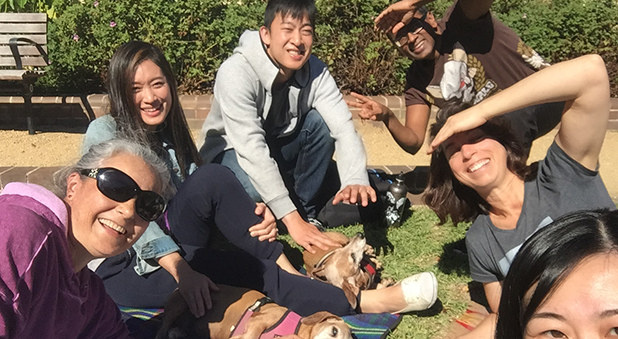What we say and how we say it matters enormously in our church services. If we want to truly welcome people from other backgrounds into our church family, we need to rethink what we do and what it communicates, says Bishop Peter Lin.
It’s natural for our behaviour at church to be dictated by the dominant culture present. However, are the things we do a help or a hindrance to people of other ethnicities?
As we attempt to reach the variety of people in our neighbourhoods with the gospel, we need ensure they feel welcomed and loved when they come to our churches. This may mean sacrifices for the sake of the gospel.
“We need to cement a mindset that sees ourselves as a multicultural church,” says Bishop Lin, who is bishop of Georges River Region. “We need a mindset that is willing to change and sacrifice for others. Are there ways we can soften the cultural disconnect for others?”
So how can we build a multicultural church, with a multicultural community, into a loving community of believers?
The first step is simple. “Listen, listen, listen,” Bishop Lin says. “Listen to cultural cues. For example, hugging and kissing in some cultures is important. We can’t do everything to meet everyone’s needs, so we have to over-compensate in other areas.”
“We need to cement a mindset that sees ourselves as a multicultural church”
And he has plenty of first-hand experience. As an Australian-born Chinese, Bishop Lin has found himself regularly out of his comfort zone for Christ.
“As my previous church grew, we started getting South Americans, Middle Easterners and Mediterraneans who all come from hugging and kissing cultures,” he says. “It was hard enough getting used to it with the women, but hugging and kissing men was a real challenge. They don’t do the awkward pat on the back hug, they bear hug you.”
Nothing speaks louder than getting alongside others.
For those of us who preach or teach the Bible, ask who your sermon illustrations connect with. “Try to use illustrations highlighting other cultures, or that are common to all cultures,” Bishop Lin says.
He also recommends being mindful of the length of sentences, the complexity of language and encourages churches in his region to get creative with helping people understand the sermon. “Some churches use translation loops and others even hand out the script of the sermon. Recording sermons is helpful as it allows people to listen again.”
The way we conduct other upfront activities also needs to be assessed.
“No jargon and no big words!” Bishop Lin says, encouraging churches to refrain from in-house acronyms and unfamiliar terms. “Mix up the cultures upfront, and encourage everyone to be mindful of what they wear. For some cultures, respect is very important so using titles can be helpful.”
The end goal is to love and welcome people from all cultures into church community. While we can change the way we communicate from the front, nothing speaks louder than getting alongside others.
“Who would know what to do if they went into a mosque or a Hindu temple?” Bishop Lin asks. “Would you know when to stand, sit or kneel? Why would people coming to church for the first time know what to do in church, or what all the acronyms mean?
“Let’s have people sit with them and explain things to them. Educate your congregations to do these things. Learn a couple of words in their language, even if it’s just ‘Hello’, ‘Goodbye’ and ‘Thank you’. They will love it and it shows you love them.”


















